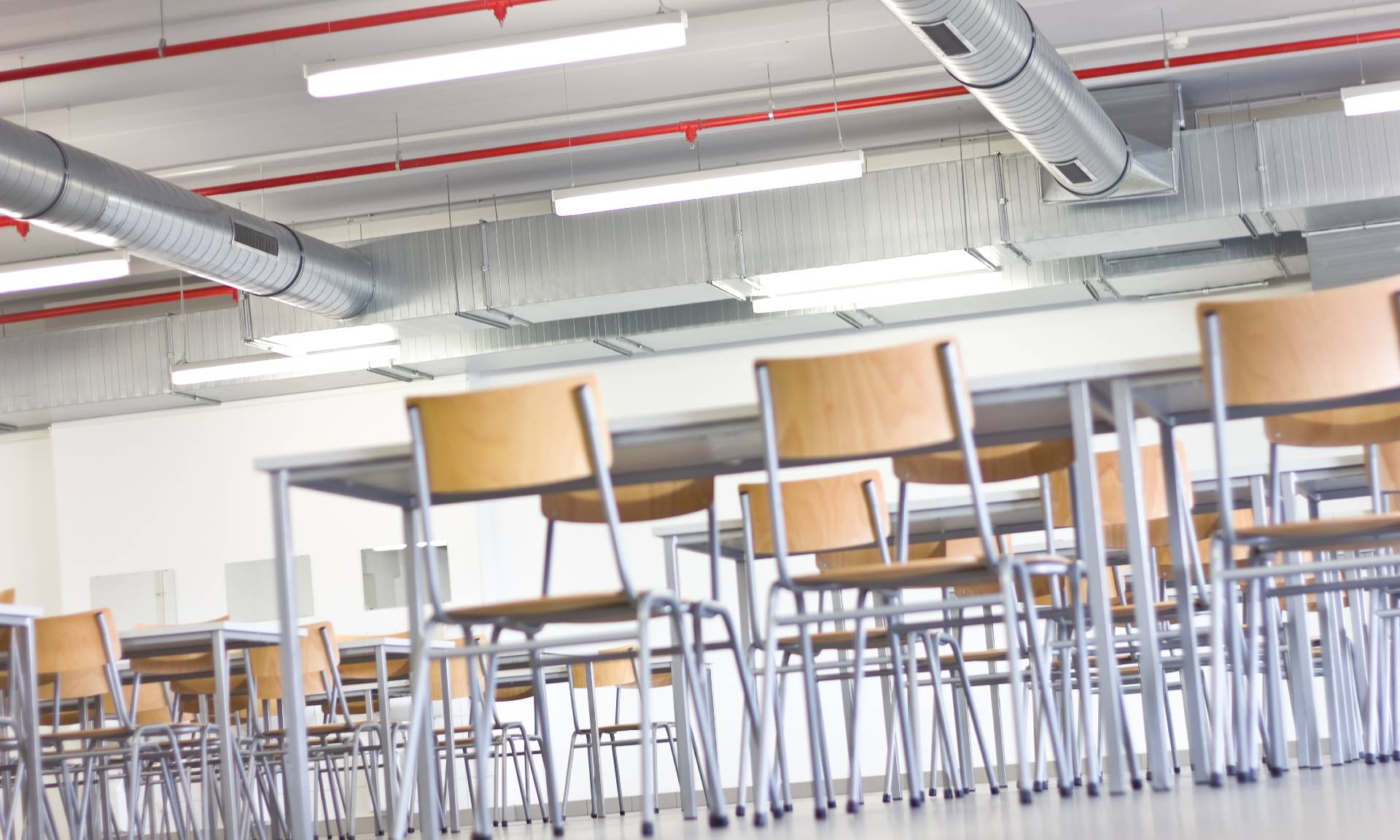It should go without saying, but providing a safe and comfortable atmosphere in educational buildings is critical to students’ ability to learn. Alan Macklin, Technical Director at Elta Group and Chairman of the Fan Manufacturer’s Association, explores the importance of optimising a school’s ventilation strategy.
Ventilation has always been something that is absolutely crucial to get right in schools. The role that good indoor air quality (IAQ) plays in student performance and comfort is significant, and it is important that those tasked with delivering adequate air circulation are aware of why, and how, to optimise air quality within a school.
Boosting concentration
Perhaps the most obvious function of a school building is to provide an atmosphere that is conducive to learning. This encompasses a raft of factors, from lighting through to the layout of classrooms, all in the name of improving concentration. One factor that cannot be overlooked, and yet all-too-often is, is the link between IAQ and academic performance.
Evidence suggests that when levels of CO2 are higher, there is a noticeable drop in concentration. This has immediate consequences for occupants of a school, where students spend most of their time learning, developing, and expanding their field of knowledge. There are also long-term health issues associated with bad IAQ, including headaches, coughs, and irritation of the eyes, nose, throat and skin.
Schools must be a safe environment for students, and with regards to both immediate and long-term concerns, ventilation is pivotal to ensuring this is the case. Mechanical ventilation, such as Elta Fans’ PREMA range, is the most effective way to provide fresh, filtered air into classrooms. CO2 sensors detect changes in pollution levels, automatically adjusting fan speed to ensure that air quality is reliably controlled, and drowsiness doesn’t set in.
Get in control
Managing the comfort levels within a school can be challenging, and many opt for natural ventilation as a way to improve IAQ. However, this can become an issue in colder months, when cool air flows from outside, into the building, placing a huge amount of strain on a school’s heating system.
It is also reliant upon the quality of the surrounding outdoor air, with very little control over the flow of air coming into the building. Mechanical ventilation avoids these issues by providing schools with much greater control over the temperature and quality of air flowing into classrooms, thus increasing the comfort and wellbeing of occupants.
Minding the energy bills
Schools are required to ensure the safety of students and staff, but it is also true that they must consider the financial implications of providing good IAQ. One of the biggest economic challenges is the intrinsic link between air quality and thermal comfort, because as we’ve touched upon already, cooler outdoor air is often used as part of the air circulation process.
Once again, mechanical ventilation presents a solution, as it can combine thermal energy recovery with added thermal treatment to help reduce energy expenditure. Thermal energy recovery units are able to recover heat from warm air inside the school, and use it to raise the temperature of incoming air. Adopting an intelligent ventilation strategy that uses indoor air quality and energy recovery management devices can help to maximise energy savings, without sacrificing on performance.
Ensuring Compliance
Away from the direct impact that ventilation has on occupants of a building, there are certain regulatory requirements that schools must adhere to. Recent updates to the Building Bulletin 101 (BB101) bring stricter guidelines to air management in schools, especially when it comes to overheating in summer months and CO2 levels in teaching spaces.
Between the 1st May and 30th September, there should be no more than 40 hours when the temperature is 10oC above the allowable maximum. For CO2, the daily concentration in an occupied space must be less than 1500ppm for natural ventilation, and for mechanical ventilation it should be under 1000ppm.
Straightforward installation
To avoid disruption, schools will usually undertake building and refurbishment works outside of term-time, and given the extensive disruption to the standard timetable 2020 has witnessed, this is even more pertinent. Therefore, any mechanical ventilation must be installed quickly and efficiently, in order to be ready in time for students returning.
Elta Fans’ PREMA range of energy recovery units are among the lightest on the market, which makes them easier to install than many other mechanical ventilation models. With quick set-up times and intuitive controls for when they are up and running, mechanical ventilation units are a crucial asset for schools in the provision of clean air and thermal comfort.
For more information, please visit: https://www.eltafans.com/
